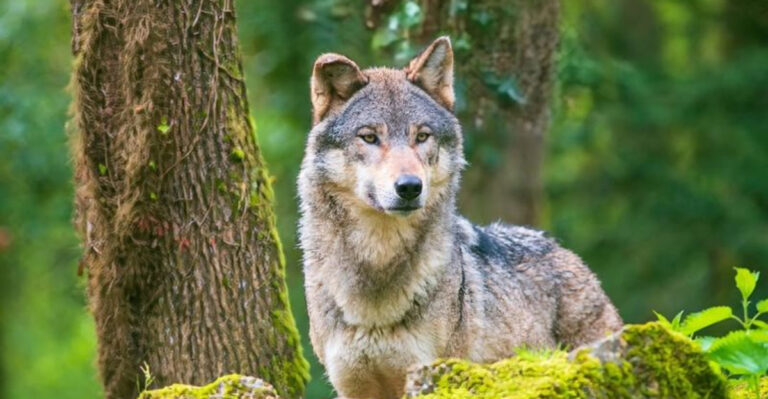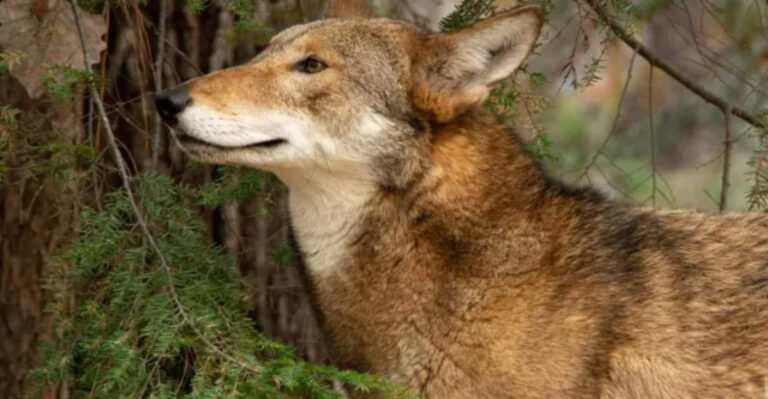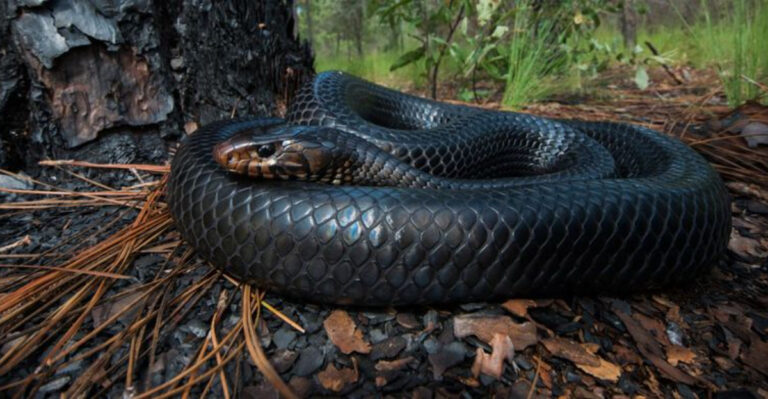The 20 Greatest Songbirds Found In America
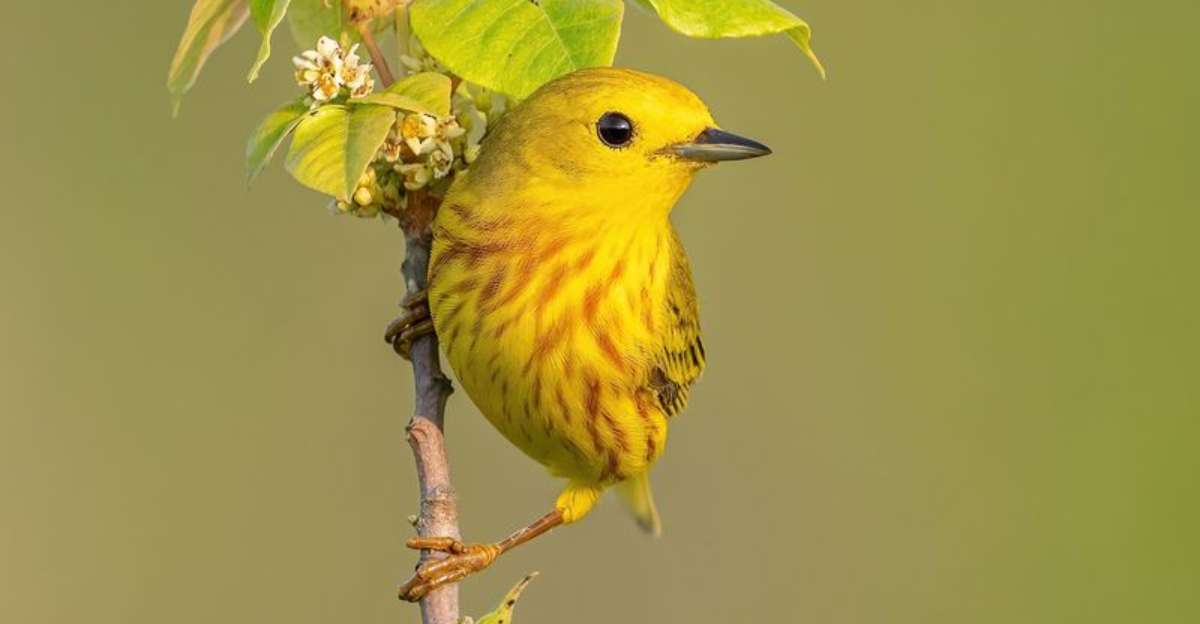
America is home to some of the most melodious and colorful songbirds in the world. From the lush forests of the East to the arid deserts of the West, these feathered musicians bring joy and vibrancy to their surroundings.
Let’s explore the top 20 songbirds you might encounter, each with their unique song and charm. Whether you’re a seasoned birder or just enjoy watching from your backyard, these songbirds will captivate your senses.
1. American Robin
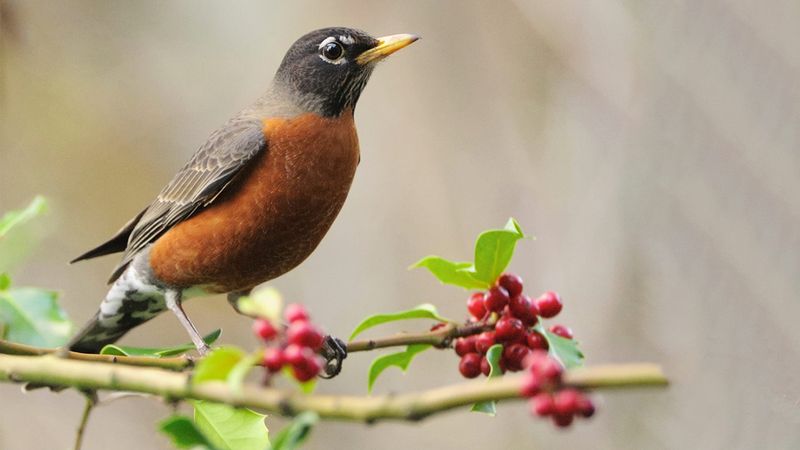
Famous for its cheerful song, the American Robin heralds the arrival of spring. Its melodious tune often fills the morning air, creating a symphony that is impossible to ignore. With its bright orange-red breast and striking black head, this bird is a visual delight.
Robins are versatile in their habitat, from city parks to wild forests, adapting easily to human presence. They are often seen hopping on open lawns in search of earthworms and insects. Encouraging robins to visit your yard can be achieved by planting fruit-bearing trees like holly and crabapple, providing them with a feast throughout the season. These birds also appreciate shallow bird baths for a refreshing drink or bath.
2. Northern Cardinal
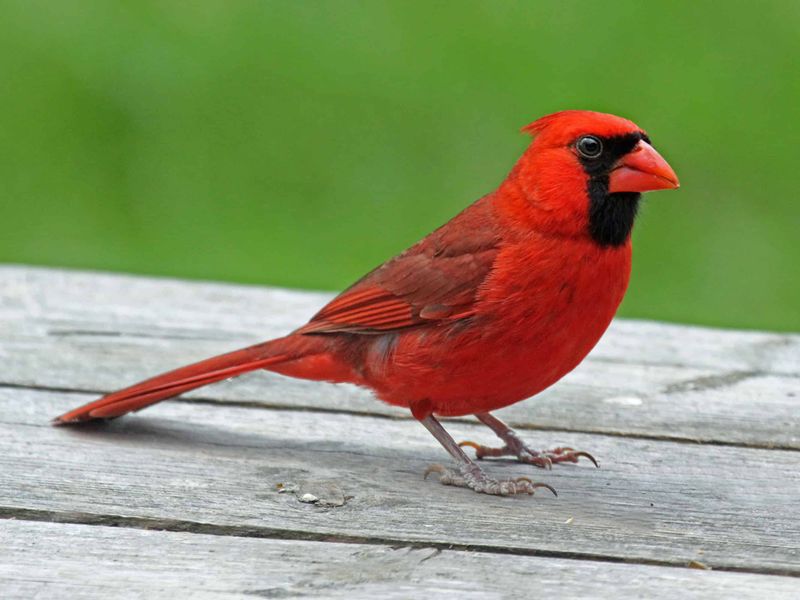
The Northern Cardinal, with its brilliant red plumage, is a favorite in many American backyards. Its distinctive whistle-like call is both soothing and recognizable, making it a beloved guest in gardens. Cardinals are non-migratory birds, often spotted year-round.
They are particularly noticeable against the winter snow, offering a splash of color in the cold. Their diet mainly consists of seeds and berries, and they appreciate sunflower seeds from feeders. Providing dense shrubbery or evergreens can create an inviting environment for cardinals.
These shrubs offer shelter and nesting spots, ensuring these charming birds feel at home. Bird enthusiasts also recommend installing a cardinal-specific feeder to attract them.
3. Eastern Bluebird
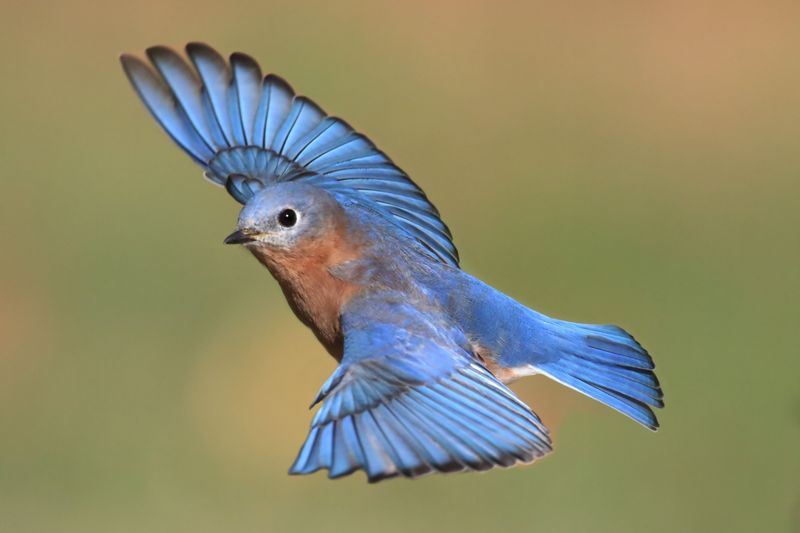
The Eastern Bluebird is a vision of charm with its vibrant blue wings and warm orange chest. Known for its gentle warbling song, this bird is a symbol of happiness and hope.
Bluebirds thrive in open fields and meadows, often found perched on fence posts scanning for insects. Their diet primarily consists of insects and berries, making them valuable for natural pest control. To attract Eastern Bluebirds, consider placing nesting boxes in your garden.
These boxes provide a safe place for bluebirds to raise their young, encouraging them to stay nearby. A balanced ecosystem with native plants can also sustain these delightful songbirds.
4. Song Sparrow
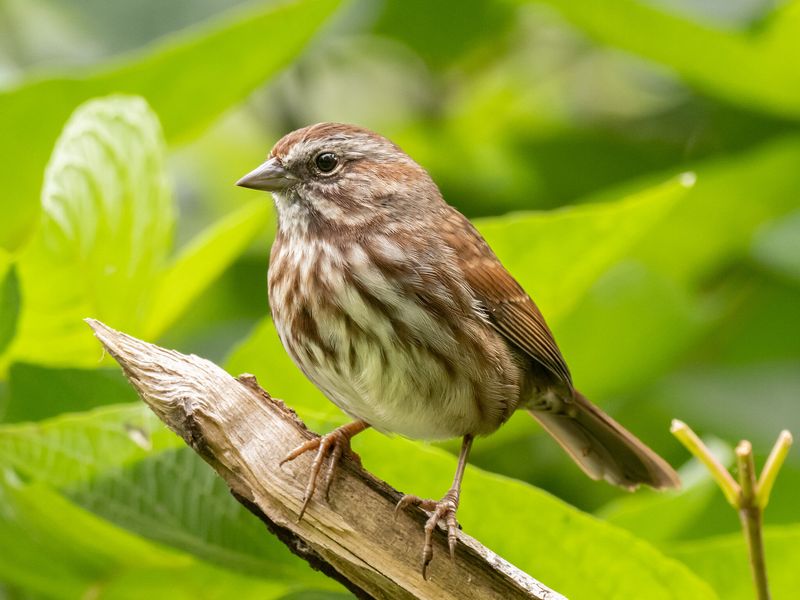
Song Sparrows are known for their versatile singing abilities, often heard before they’re seen. Their streaked brown plumage provides excellent camouflage among shrubs and grasses. These adaptable birds thrive in a variety of habitats, from marshes to suburban gardens.
They are ground foragers, nibbling on seeds and small insects as they hop across the earth. Creating a welcoming environment for Song Sparrows can be as simple as incorporating native plants and providing low, dense cover. This encourages these lively birds to visit and possibly make your yard their home.
5. Baltimore Oriole
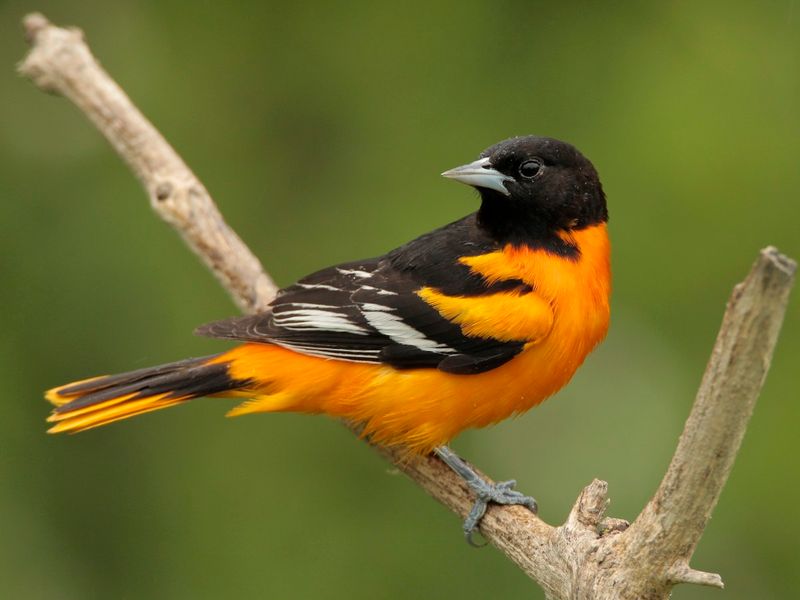
The vibrant Baltimore Oriole is easily recognized by its striking orange and black feathers. Its flute-like, joyful song often announces its presence, especially in the spring and summer months.
These orioles prefer open woodlands and gardens with tall trees, where they can weave their intricate hanging nests. Their diet includes insects, nectar, and fruits, making them frequent visitors to feeders offering oranges or grape jelly.
Encouraging Baltimore Orioles to visit can involve planting fruit-bearing trees and shrubs or setting up specialized feeders. Their delightful presence and song are worth the effort, bringing a touch of tropical flair to your surroundings.
6. House Finch
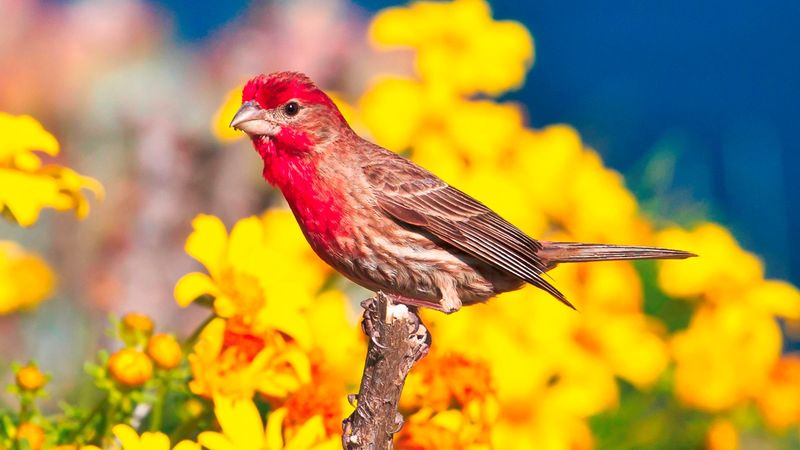
House Finches are lively and social birds, known for their cheerful song and rosy-red plumage on males. They adapt well to urban environments, often seen around residential neighborhoods. These finches enjoy seeds, especially sunflower seeds, and are frequent visitors to feeders.
Their presence adds a splash of color and music to any backyard. Providing a consistent food source and water can attract House Finches. They socialize in flocks, making their visits a lively spectacle. Consider placing feeders in visible spots to encourage these charming birds to stop by.
7. Western Meadowlark
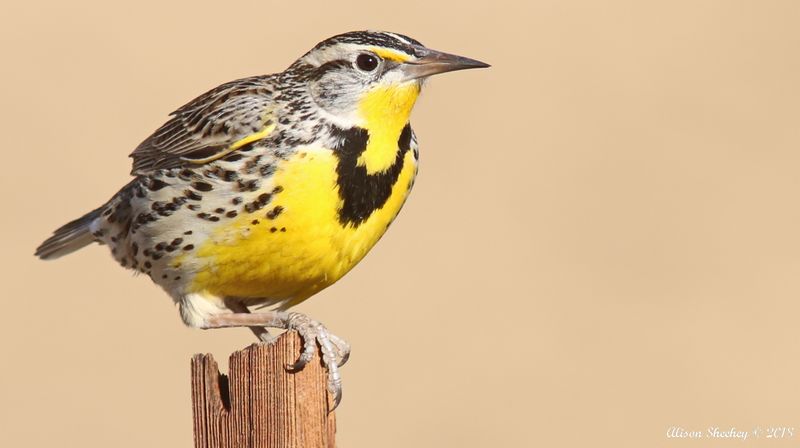
The Western Meadowlark’s song is a melodious tribute to the wide-open spaces it inhabits. Its bright yellow belly and brown-streaked back make it a striking presence in grasslands and fields. These birds are ground nesters, often seen perched on fence posts as they sing their flute-like tunes.
They feed on insects and seeds, contributing to their ecosystem’s health. To support Western Meadowlarks, maintaining open fields and meadows is essential. Minimal disturbance to their habitat can help these birds thrive, ensuring their beautiful songs continue to grace the landscape.
8. American Goldfinch
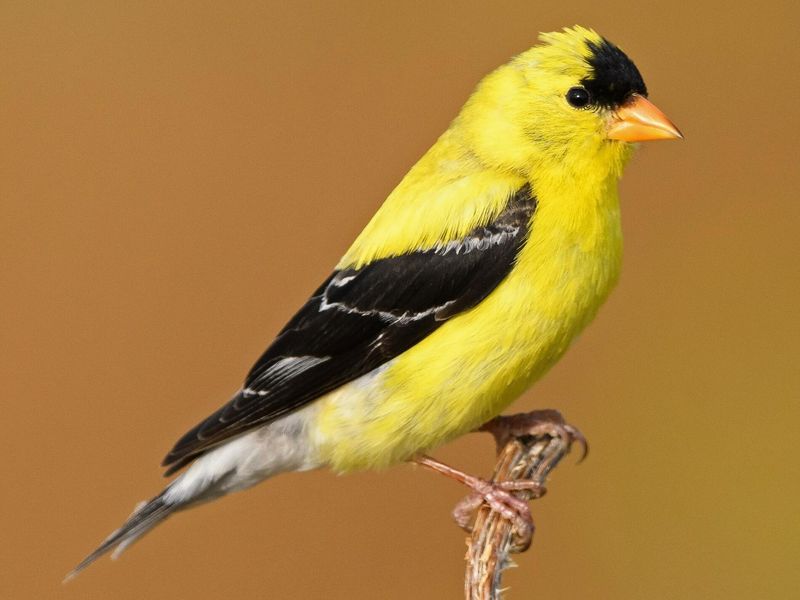
The American Goldfinch, with its bright yellow plumage, is a delightful sight in summer landscapes. Its cheerful song matches its appearance, adding joy to gardens and fields. Goldfinches primarily feed on seeds, particularly from thistles and sunflowers.
Their unique undulating flight pattern and social nature make them entertaining to watch. Planting native thistles or sunflowers can attract American Goldfinches to your area. Providing a clean water source and hanging feeders with nyjer seeds can also enhance their visits, offering plenty of opportunities to enjoy their vibrant presence.
9. Red-Winged Blackbird
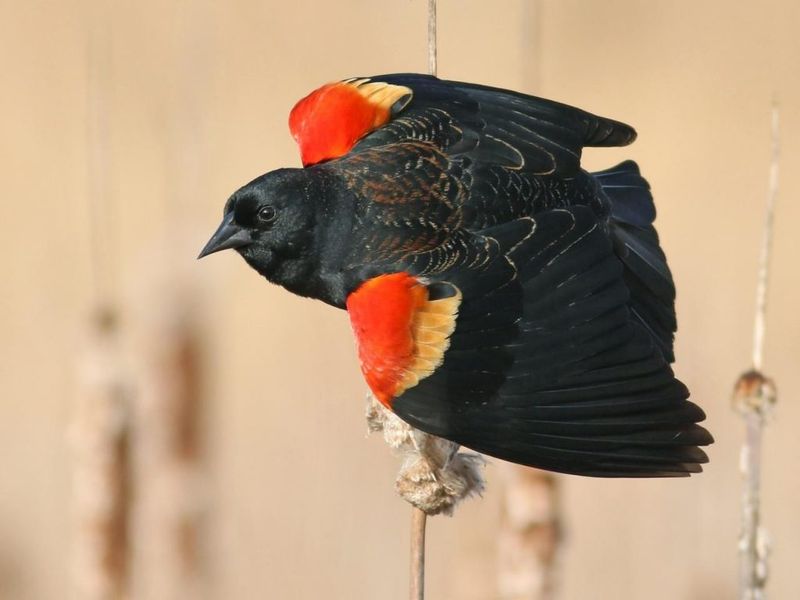
The Red-winged Blackbird is a bold and vocal presence in wetlands and marshes. Its striking red and yellow shoulder patches are unmistakable, providing a vivid contrast against its black body. This bird’s call is a familiar sound in marshy areas, often warning other birds of intruders.
They nest in dense vegetation, making use of reeds and cattails for shelter and protection. Creating or preserving marshland habitats can support Red-winged Blackbirds. Planting native wetland plants and maintaining water levels can provide the resources these birds need to thrive, ensuring their lively calls remain a staple of their environment.
10. Blue Jay
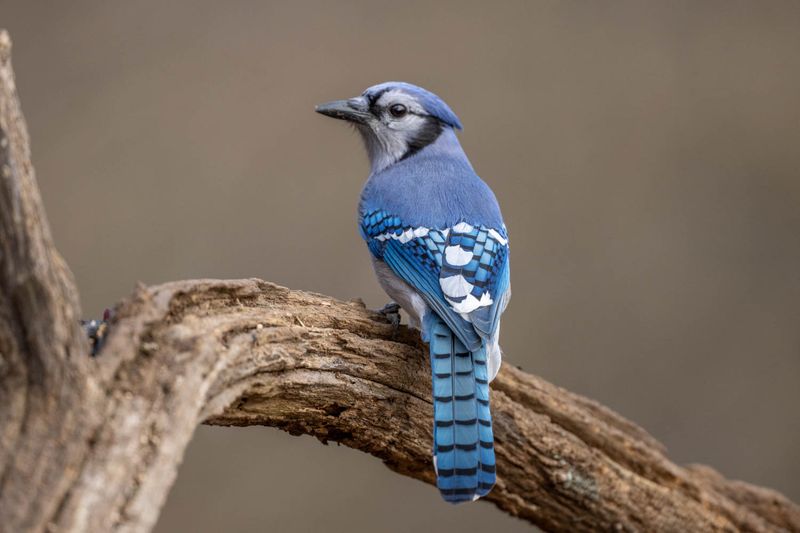
Blue Jays are known for their intelligence and complex social behaviors. With striking blue and white plumage, they are both beautiful and bold, often seen commanding attention in forests and suburban areas alike. Their calls are varied, ranging from harsh cries to softer, melodic notes.
Blue Jays are also known to mimic other birds, showcasing their vocal versatility. Providing oak trees or peanuts can attract Blue Jays to your yard. These birds enjoy acorns and are known to store them away for winter. Their playful antics and vibrant presence make them a favorite among birdwatchers.
11. Cedar Waxwing
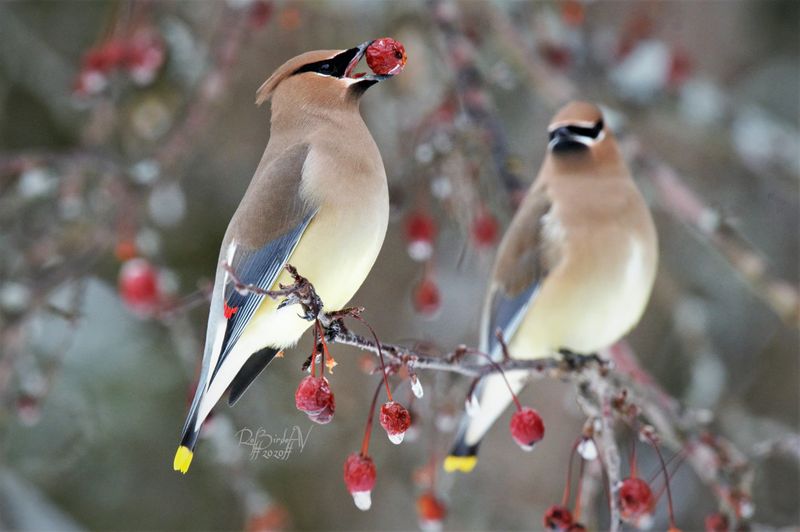
The Cedar Waxwing is a sleek, elegant bird recognized by its silky brown plumage and conspicuous wax-like wing tips. Its high-pitched calls are gentle yet distinct, adding a subtle melody to wooded areas. These birds travel in flocks, often seen feasting on berries and fruits.
Their social nature and graceful movements make them a captivating sight during migration seasons. Planting fruit-bearing trees such as cherry or crabapple can attract Cedar Waxwings. These trees provide both nourishment and a picturesque setting for these birds, encouraging them to linger longer.
12. Mourning Dove
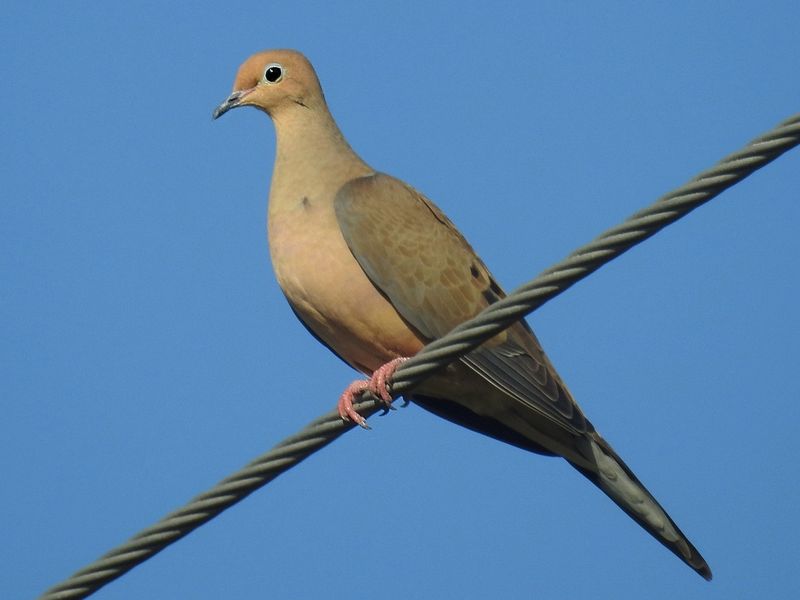
Mourning Doves are symbols of peace with their soft, mournful cooing calls. Their gentle gray plumage and slender form add serenity to gardens and open fields. These doves are ground feeders, often seen walking gracefully as they search for seeds.
Their presence is calming, and their coos are a soothing backdrop to outdoor settings. To invite Mourning Doves into your space, consider scattering seeds on the ground or providing platform feeders. Their preference for open spaces and gentle demeanor make them delightful guests in any garden.
13. Yellow Warbler
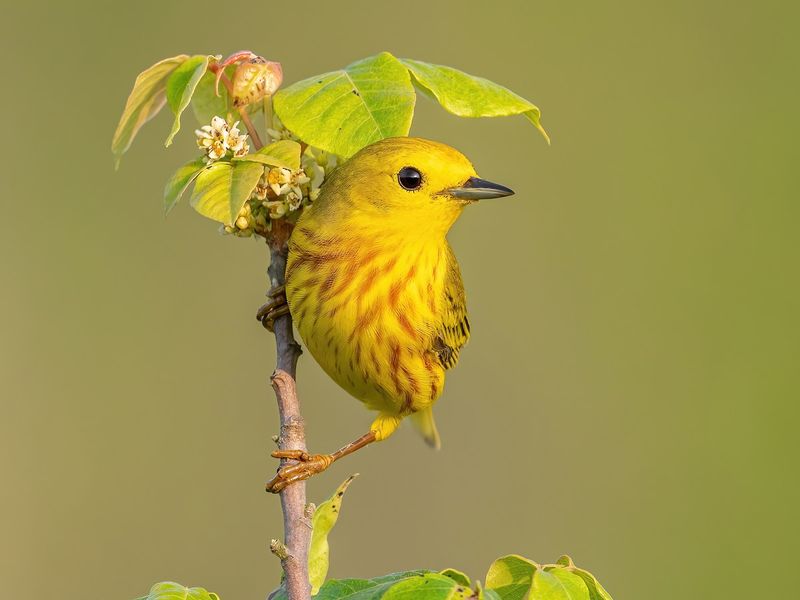
The Yellow Warbler is a burst of sunshine with its vivid yellow feathers and cheerful song. It thrives in open woodlands and along streams, where its sweet singing can be heard among the trees. These agile birds feed on insects and caterpillars, contributing to pest control in their habitats.
Their active nature and bright color make them a joy to observe. Creating a bird-friendly garden with native plants and water sources can attract Yellow Warblers. Their presence brings a touch of brightness and melody, enhancing the natural beauty of any wooded area.
14. Carolina Wren
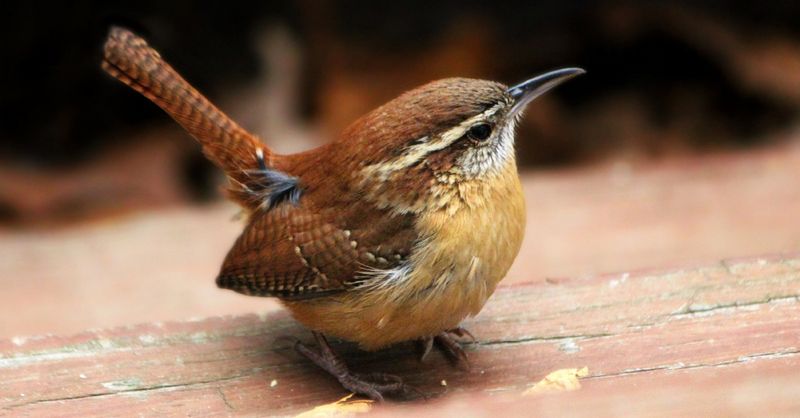
Carolina Wrens are small, energetic birds known for their powerful, ringing songs. Despite their size, they make their presence known with lively tunes and curious behavior. These wrens inhabit dense underbrush and wooded areas, where they hunt for insects and spiders.
Their adaptability makes them common in suburban gardens as well. To support Carolina Wrens, consider providing brush piles or dense shrubs for shelter. Their inquisitive nature and engaging songs make them a charming addition to any backyard.
15. Black-Capped Chickadee
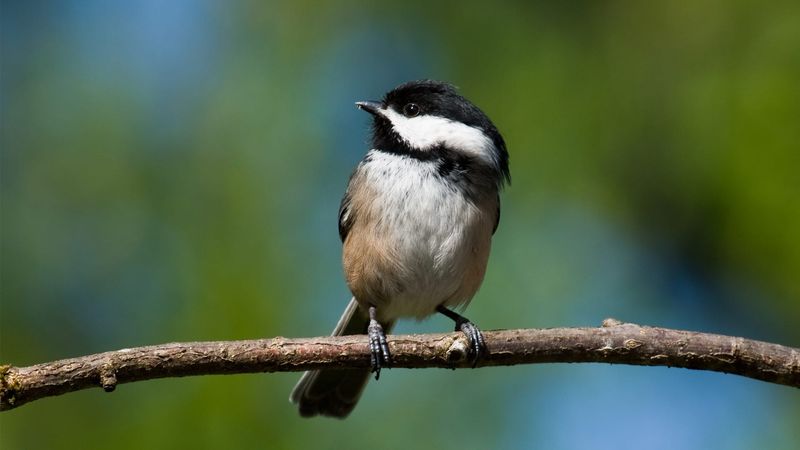
The Black-capped Chickadee is a friendly, inquisitive bird known for its distinctive ‘chick-a-dee-dee-dee’ call. Its black cap and white cheeks make it easily recognizable, especially against snowy backdrops. Chickadees are frequent visitors to bird feeders, enjoying seeds and suet.
Their acrobatic feeding habits and bold demeanor make them a delightful spectacle. Offering a variety of seeds and maintaining feeders throughout the winter can attract Black-capped Chickadees. Their social nature and cheerful calls bring life and energy to cold, wintry days.
16. Northern Mockingbird
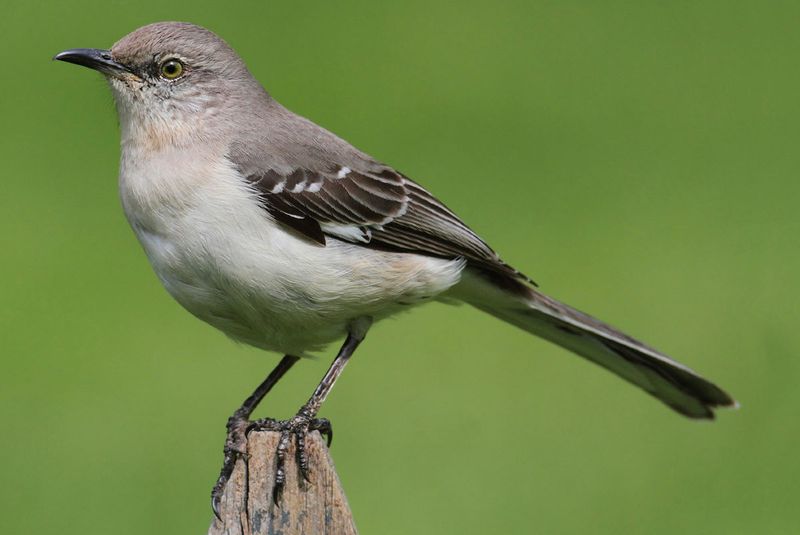
Northern Mockingbirds are masters of mimicry, known for their ability to copy the songs of other birds. Their gray and white feathers might be understated, but their vocal talents are extraordinary. These birds are territorial, often seen guarding their home range and singing to establish dominance.
Their repertoire can include a wide variety of sounds, creating a unique auditory experience. To attract Northern Mockingbirds, provide berry-producing shrubs and open spaces for foraging. Their presence and vocal performances add an entertaining and dynamic element to any garden.
17. White-Throated Sparrow
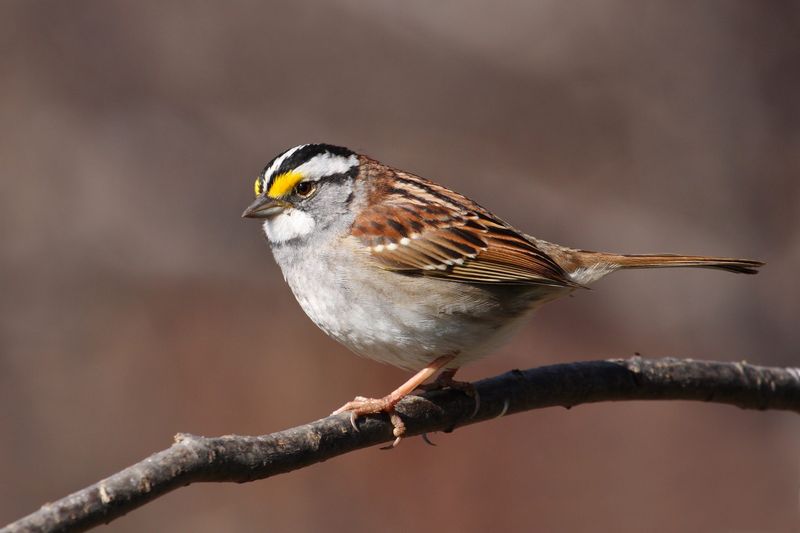
The White-throated Sparrow’s sweet whistle is a familiar sound in North American forests. Recognizable by its crisp white throat and striking yellow markings, this bird is a charming visitor to woodland areas. White-throated Sparrows forage on the ground, searching for seeds and insects among the leaf litter.
Their pleasant songs and gentle foraging habits make them a joy to watch. Maintaining a natural, woodsy garden with plenty of ground cover can attract these sparrows. Their melodic presence enhances the tranquility and harmony of forested spaces.
18. Chipping Sparrow
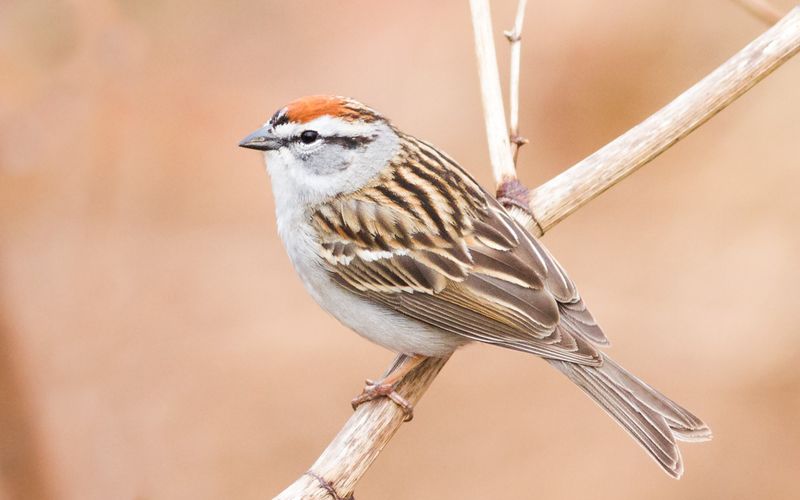
The Chipping Sparrow is a small, sociable bird with a distinctive rufous crown. Its steady, trilling song is a hallmark of spring and summer, echoing across gardens and parks. These sparrows are adaptable, often seen in open woodlands and suburban areas.
They forage on the ground, consuming seeds and insects to sustain their energy. Providing bird feeders and natural vegetation can attract Chipping Sparrows. Their lively chirping and friendly demeanor make them a welcome sight in any backyard, signaling the vibrancy of the warmer months.
19. Wood Thrush
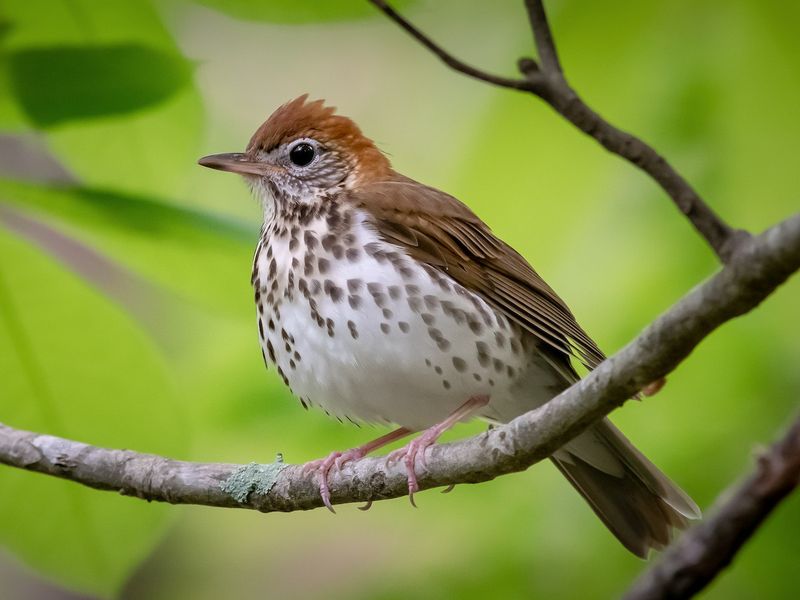
The Wood Thrush is renowned for its ethereal, flute-like song that resonates through the forest. Its speckled breast and large eyes add to its enchanting presence in deep woodlands. This thrush thrives in deciduous forests, where it forages for insects and fruits among the leaf litter.
Its haunting melodies are often a highlight for hikers and nature enthusiasts. Protecting forested areas and providing a diversity of plant life can support Wood Thrush populations. Their songs offer a timeless, mystic quality to the woodland soundscape, inviting all to pause and listen.
20. Pine Warbler
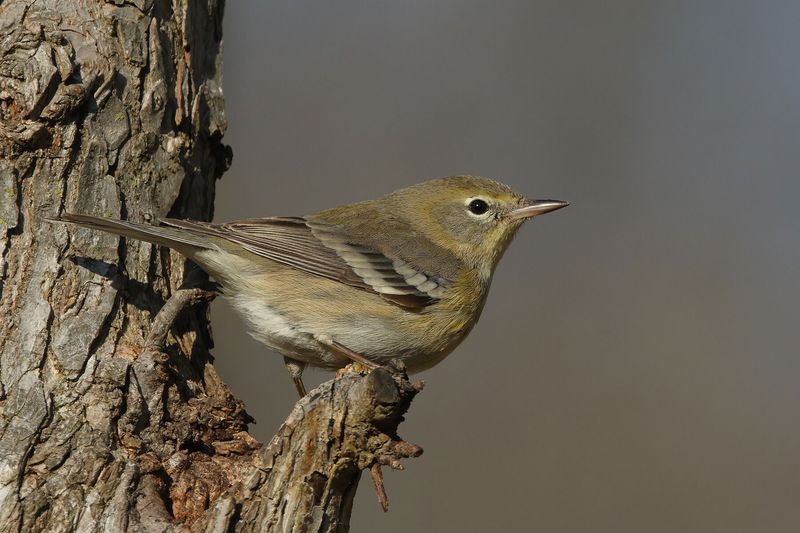
The Pine Warbler is a subtle yet captivating presence in pine forests. Its gentle, trilling song mingles with the rustling of pine needles, creating a serene backdrop. These warblers have a diet composed mainly of insects, but they also enjoy seeds and berries.
Their bright yellow plumage blends beautifully with their pine surroundings. To encourage Pine Warblers, maintaining healthy pine stands and offering suet at feeders can be beneficial. Their soft songs and delicate presence add a layer of tranquility to the forest environment.

